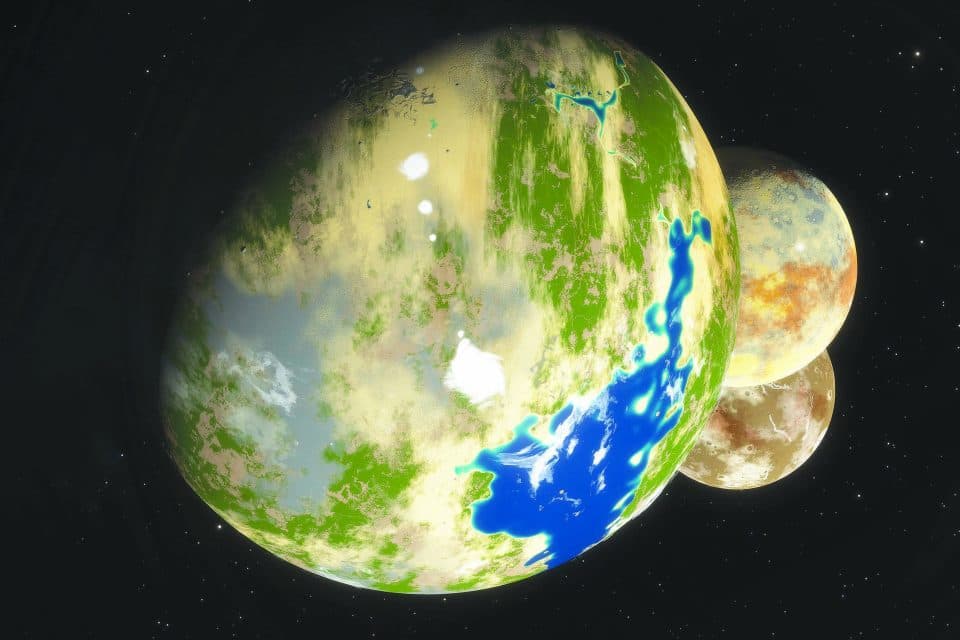NASA scientists have created a cutting-edge quantum technology tool in hopes it will help them find “water worlds” that may be hiding in plain sight in our own solar system.
One of the most intriguing aspects of our cosmic neighborhood is the presence of water in various forms, from the sun’s water vapor to the ice of distant planets and moons.
But it’s not just the existence of water that fascinates scientists; it’s also the potential for liquid water to harbor life beyond Earth.
Dr. Hannes Kraus, a researcher at NASA’s Jet Propulsion Laboratory, explains, “Novel quantum sensors not only enable new science, but also offer the chance to downscale former flagship-class instrumentation to a size and cost allowing flagship-class science on CubeSat-class platforms.”
Liquid water and the search for life
While water in all its forms is fascinating, it’s liquid water that holds the key to the possibility of extraterrestrial life.
Astrobiologists have long followed the mantra “Follow the Water” in their search for life beyond Earth.
This quest has led them to focus on the icy moons of gas and ice giants in our solar system, such as Jupiter’s Europa and Saturn’s Enceladus.
These moons are believed to harbor vast subsurface oceans beneath their thick ice crusts, making them compelling targets for future missions.
However, penetrating these icy shells with conventional remote-sensing instruments like cameras and radar is a daunting challenge.
Until we can send landers or rovers capable of drilling or melting through the ice, scientists must rely on other techniques to detect these hidden water bodies.
Subsurface oceans are hard to find
One promising method for detecting subsurface oceans is magnetometry. Magnetic fields have the unique ability to penetrate solid material, providing valuable insights into the interior of planet-sized bodies.
Briny water, rich in dissolved salts, is an excellent conductor of electricity. As a result, a saltwater ocean can function as a planet-sized electric circuit.
When exposed to the strong rotating magnetic field of its parent planet, this “circuit” can generate an electric current that disturbs and modifies the surrounding magnetic field.
These disturbances can be observed by spacecraft equipped with magnetometers, offering evidence for the presence of liquid water beneath the surface.
The effectiveness of this technique was demonstrated by NASA’s Galileo mission, which detected a distortion in Jupiter’s magnetic field near Europa, further supporting the hypothesis of a subsurface ocean on this icy moon.
Tracing water with quantum magnetometers
Solid-state quantum magnetometers represent a groundbreaking advancement in the field of magnetometry.
These instruments offer competitive sensitivities while boasting smaller size, lower weight, and reduced power requirements compared to traditional magnetometers.
Additionally, solid-state quantum magnetometers possess unique quantum advantages, such as self-calibration through spin-nuclear quantum interaction, which allows them to compensate for drifts over time.
This capability is particularly crucial for long-duration missions to the outer reaches of our solar system.
Other quantum benefits include radiation resilience and the ability to withstand extreme temperatures, making these magnetometers well-suited for the harsh conditions of space exploration.
Atomic rainbows probed at the quantum level
At the heart of solid-state quantum magnetometers are color centers — defects in the crystal lattice of semiconductors like diamond and silicon carbide.
These color centers, which give crystals their distinctive hues, can be probed at the quantum level using modulated light.
By exploiting the quantum spin properties of these color centers, scientists can create highly sensitive magnetometers.
As the color centers are exposed to varying magnetic fields, their quantum spin properties change, which can be read electrically and/or optically.
This allows researchers to detect the presence of water by analyzing the magnetic field properties around a planetary body.
Quantum magnetometers can find hidden water
Research teams at NASA’s Jet Propulsion Laboratory are currently developing two high-tech magnetometers designed to measure spin properties from space.
The SiCMAG (Silicon Carbide Magnetometer), led by Dr. Corey J. Cochrane, is an elegantly simple instrument that reads spin properties electrically.
Meanwhile, the OPuS-MAGNM (optically pumped solid state quantum magnetometer), led by Dr. Hannes Kraus, aims to achieve even higher sensitivities by incorporating optics.
In the OPuS-MAGNM, the quantum system is pumped with green (diamond) or deep red (silicon carbide) laser light, and the system’s response is read with a light detector.
This optically pumped approach promises to push the boundaries of magnetometry sensitivity even further.
Water, life, and quantum magnetometers
In summary, as we continue to explore the vast expanse of our solar system, the search for water and the potential for life beyond Earth remains a driving force behind our efforts.
With the development of cutting-edge technologies like solid-state quantum magnetometers, we are better equipped than ever to unravel the mysteries of our cosmic neighborhood.
By following the water and harnessing the power of quantum physics, we may one day discover that we are not alone in the universe.
The future of space exploration is bright, and the secrets of our solar system’s water are waiting to be unlocked.

